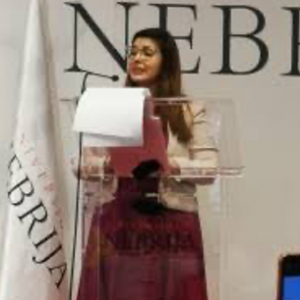Menu
About the research webinar
Date: Wednesday, 17 February
In this webinar, Dr Andrés Arenas, Dr Vasilios Stouraitis, Dr Konstantinos Tsanis, and Dr Jessica Bayon Perez will present on their latest research on how a Swiss watch company was able to successfully crowdfund an iniative that involves the production of watches that are entirely built on space and rocket debris.
This webinar will link theory with practice, on how to successfully manage change through strong and innovative leadership in the areas of sustainability.
'Global Perspectives on Change Management and Leadership in the Post-COVID-19 Era'
About the research
The chapter aims to provide a case study for successful change leaders depicting real life examples of management, leadership and change during the Covid-19 period. The case used will be the exceptional case of Werenbach watches, who have shifted from using traditional approaches to reach their customer base, basically Switzerland and Germany, into transforming their strategy using internet based marketing techniques and aggressive media coverage to reach the Americas and different countries in Europe during the pandemic. Among these methods, is the successful management of a crowdfunding during the pandemic period and raising almost half a million euros, a crowfunding record, reaching their original pledge (€55,612) in only two minutes. They have done it enabling people to enjoy an original product even with extremely adverse circumstances.
The product they are dealing with is linking people’s experience with a piece of history, a piece of space, in the customer’s hand. They do this by using, innovatively, materials coming out of space rocket debris that felt into earth after the launching process. They processed rocket materials and melt the rocket aluminium to make the case and the dials, which are a world innovation – the first ever produced using aluminium injection moulding technology. Also, in some models, the dials are cut directly from the outer shell of the rocket, making them a unique piece.
The chapter will unite theory with practice and provide a guide to future managers in how to successfully manage change through strong and innovative leadership. The chapter will cover the following topics (in relation to the case): new products and new technologies, implementing change contemporary leadership, charismatic and transformational leadership, and power and influence. More specifically, the chapter will cover sections such as pursuing the idea, networking, implementing the change, reacting to setbacks, and leading change.
There is a lack of in-depth studies in the field of product development (Schuh et al., 2017). As Rosenbaum et al. (2018) state the research over the last 50+ years has not fundamentally developed anything completely new; rather, the research has provided us with clarity to better understand what was developed many years ago and to consider how its ongoing application into the future can be optimised. This, however, has not been undertaken during a pandemic such as Covid-19. To remain competitive organisations are under continuous pressure to support greater levels of product variation with increasing agility (Morris et al., 2016). Agile development processes have recently regularly been named as key to the development of novel physical products. These processes pursue the target of limiting both time-to-market and resources associated with the realisation of innovative products (Schuh et al., 2017). The objectives of this chapter are to identify the innovation strategies used by the company to explain the forces driving innovation for changing products and technologies. Organizations must embrace many types of change (particularly under uncertain circumstances). One vital area of innovation is the introduction of new products and technologies; ie. a change in the organization’s product or service outputs. There are three innovation strategies for new products and technologies; exploration, cooperation and innovation roles (Daft, 2012). The chapter will examine all three in relation to the company to pinpoint where change has taken place. In particular, the use of crowdsourcing as an element of change in a company. The implementation tactics of Werenbach watches will be examined and traced back to the initial decisions taken by management. The need for change (aside from the pandemic) will be assessment and traced back to an original source, in addition the perception of the need will be examined. Sub-elements of change such as communication, negotiation, education, participation and coercion will be taken into account and examined. Communication and education are used when solid information about the change is needed by users and others who may resist implementation. Participation involves users and potential resisters in designing the change. Negotiation is a more formal means of achieving cooperation, such as formal bargaining. Coercion means that managers use formal power to force employees to change. In addition, as it has been presented in the literature, that 80% of companies that are successful innovators have top executives who frequently reinforce the importance of innovation both verbally and symbolically.
The driving forces of change will be thus analysed and traced back to their original source. The elements of change promotion will be examined along with those of resistance to change such as self-interest, lack of understanding and trust, uncertainty, and different assessment and goals. It is important to note the authors have got access to the manager for further information and discussion. Typical driving forces are inventory cost savings, fewer workers, a more competitive market response. While restraining forces (or barriers to change) are freight system, facilities layout, worker skills, and union resistance to job loss (Daft, 2012).
The chapter is aimed at practitioners, academics and policy makers whose interest is to promote innovation and change in enterprises during the pandemic. The value of this chapter lies in its innovative product and use of internet marketing during the pandemic. The change in strategic direction (ie. change) is worth examining and using as an example for further implementation of strategy. It is also a survival technique for many companies (especially small and medium sized) struggling to renew themselves under the pandemic. As the book covers global perspectives on change, this is an ideal company sourcing internationally and using innovative techniques to reach the global markets (e.g. Switzerland and Germany).




























